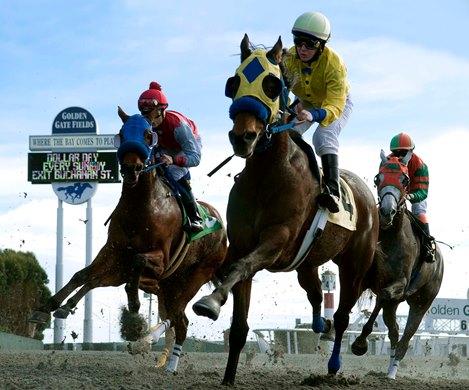The number of horse fatalities at facilities regulated by the California Horse Racing Board fell to 71 in 2021, the lowest number in the state in 10 years of data published in the CHRB website.
The tally represents a 26% decline from 2020 and a nearly 45% decline from 2019, when deaths increased Santa Anita Park earlier this year led to criticism and public outcry from anti-racing groups. According to Mike Marten, a CHRB spokesman, there was an approximately 9% decline in starts in California from the 2018-19 fiscal year to the 2020-21 fiscal year.
California has implemented numerous equine health and safety measures since 2019, either through track regulations known as “house rules” or through CHRB regulation. Changes include drug restrictions, increased veterinary examinations and supervision, entrance examination boards and continuing education programs for trainers. Racing culture has also adapted to place greater emphasis on horse safety.
“I think every stakeholder in California understands that animal welfare is the most essential thing. It has to be because of the state we live in and because it’s the right thing to do,” said Scott Chaney, executive director of the CHRB.
The CHRB tracks deaths of horses in racing, training and in a category the regulator calls “other,” which classifies horses that succumb to stable accidents or illnesses. Few regulators count all of these types of deaths.
Sign in Blood horse Daily
Chaney said California's death toll per start is among the best in the country, if not first, with the possible exception of one state with a preponderance of standard horse racing, which is safer than thoroughbred and quarter horse racing. Some racing regulators and tracks in other parts of the country do not release their death dates.
He pointed out that 20 horses died in more than 31,500 starts in California last year, including races for Thoroughbreds, Quarter Horses and Standardbreds.
Deaths from racing, training and “other” all fell to their lowest levels in CHRB data going back to 2012, when 238 horses died.
Last year, 39 horses died at CHRB facilities from musculoskeletal injuries and 32 from non-musculoskeletal conditions, including the 2021 Kentucky Derby Presented by Woodford Reserve (G1) winner Medina spirit who collapsed and died after a workout on Dec. 6 at Santa Anita. Chaney said autopsy results and toxicology reports on his death are expected within a month.
Golden Gate Fields It led the state with 26 fatal accidents last year, ahead of Santa Anita with 21. The two tracks are open for training virtually year-round, with high horse volumes and longer Thoroughbred events than other tracks in the state. Golden Gate competed in over 1,100 races in 2021 with four fatal accidents. It also remained open for training during trade shows at the Northern California circuit.
Racing at Golden Gate Fields
Golden Gate had just one fewer fatalities than in 2020, while other routes saw more significant declines. Most of the horse deaths in Golden Gate were not due to racing, but were during training, or were deaths that fell into the “other” category.
“I hope and expect that this will change somewhat given a regulation that only came into force on January 1st and that means private veterinarians will also carry out examinations before they work, which is a recent requirement for us Chaney said. “That’s why I think we really need to focus on injury training.”
David Duggan, general manager and vice president of Golden Gate Fields, described some of the “other” deaths as extraordinary incidents.
Golden Gate, whose Tapeta track was installed in 2007, is the only remaining track in the state with a synthetic surface. According to long-term data in the Jockey Club's Equine Injury Database, synthetic tracks are statistically safer than unpaved tracks. However, synthetic surfaces, like unpaved tracks, require maintenance and can deteriorate over time.
On March 4 last year, anti-racing protesters disrupted the Golden Gate race by lying on the surface of the Golden Gate track, resulting in the cancellation of the first race of the day and the delay of six additional races by more than led to six hours. Protesters claimed the demonstration was in response to the high number of dead horses at the track.
Golden Gate has suffered three fatalities so far in 2022, two in racing and one in the Other category.
The Northern California racetrack came under fire from the CHRB during last month's CHRB meeting after five horses died in November. Three of the CHRB's seven commissioners preferred to grant Golden Gate only a three-month license before a review. Ultimately, Golden Gate received a standard six-month license.
The CHRB will hold its monthly meeting on January 20, although Golden Gate is not an issue on the agenda. The CHRB meeting requires an update from Alan Balch, executive director of the California Thoroughbred Trainers, who leads an accident prevention task force in the state.
Balch declined to comment on Jan. 18 ahead of his upcoming remarks.
Methods to reduce shoulder injuries and sudden deaths are likely to be topics addressed by the task force and the CHRB in the coming year.


